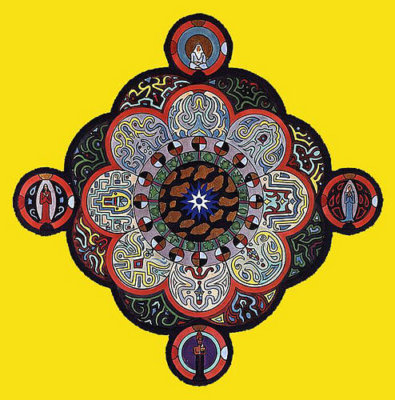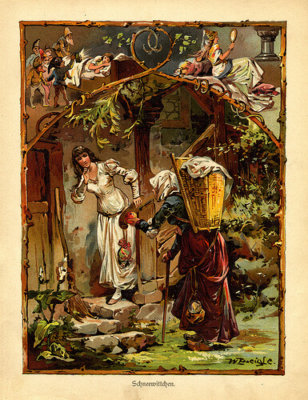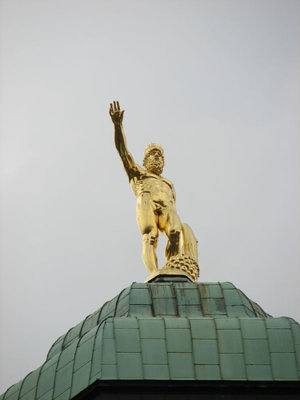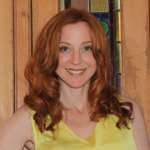Carl Jung, Archetypes, and You – What’s It All About?

By: turrido50
by Andrea M. Darcy
Carl Jung, the leading thinker of our times who bought the idea of archetypes to psychology*, did not have a knack for presenting ideas clearly. He himself freely admitted to this (and anyone who has tried to read one of his earlier books will attest to it!).
This has left archetypes a sometimes confusing and still disputed topic.
But knowing the basics, as well as how Jung pulled together his ideas, can help you form your own understanding about archetypes.
*Jung didn’t feel he created the idea of archetypes, pointing out that they were already recognised in other fields, such as literature with it’s idea of ‘motifs’ in myths.
So what are Jungian archetypes?
Jung called archetypes “identical psychic structures common to all” that exist to connect us to “the archaic heritage of humanity”. In clearer terms:
Archetypes are primal patterns — recognisable and repetitive ways of thinking that represent universal human experiences.
An archetype can be a thought, image, concept, experience, and even feeling. As long as it is a pattern that transcends time, culture, and individuality, it could be argued it’s an archetype.
Examples often given are ‘the loving mother’, ‘the wise old man’, and the shape of a cross. You often find archetypes showing up in religious art, including mandalas (another of Jung’s interests).
Archetypes and myths

By: William Creswell
It can be helpful when trying to understand archetypes to know that Jung was obsessed with myths. He read myths from all over the world and from different time periods.
In fact Jung originally called archetypes ‘primordial images’.
What fascinated Jung was the repetitive nature in myths. Even if they were from different parts of the world they would contain similar characters and plot lines, such as a hero who rose up poverty.
To Jung’s astonishment, he would consistently find in myths the same images, ideas, or characters he or his patients had dreamt of without any knowledge of the similar myths in existence.
It was like something connected all of the thoughts of humankind across time (the collective unconscious, see below) and was expressed through these repeated images and stories (archetypes).
Jung eventually saw myths a kind of giant projection of the archetypes that exist within all of us. We have a need as humans to create myths to understand archetypes, and thus ourselves, others, and the world.
Archetypes and the collective unconscious
The archetypes arise from what Jung called the ‘collective unconscious’.
The ‘unconscious‘ is the part of our mind we are not aware of.
The ‘collective unconscious‘ refers to a deep layer of our unconscious that connects us to all of humankind. We are all born containing this collective unconscious – it is our birthright as humans.
A modern day analogy would be to see the collective unconscious as a giant ‘cloud’ consciousness we are all given access to. With this idea in mind you could then see archetypes as various applications and programs provided for free with our cloud subscription, waiting for the moment we need to access and run them.
So it’s because of the collective unconscious that we can have an idea about something that is similar to an idea of someone who comes from a different country, culture, or even time period.
Archetypes and the individual
If we are all born with the same underlying collective unconscious and archetypes, why are we not all the same?
Archetypes are universal, but the way they manifest in your life will be unique to you. The archetypes you unconsciously choose to work with will be triggered, for example, by your personal life experience.
The archetype of a loving mother might be a happy experience for someone who comes from a large, connected family. But if you grew up in a broken home with a mentally ill mother, the archetype might rather be something that haunts you. But eventually it might offer you the lesson of learning how to be a mother towards yourself, giving yourself the love and care your own mother couldn’t.
What do archetypes do for us?
Archetypes can help us with the following:
- understanding ourselves
- understanding our place in society
- understanding social belief systems and laws
- working with our dreams
- initiating personal growth via ‘archetypal stages’.
Archetypal stages
In developing his ideas about archetypes, Jung decided that archetypes are not just ideas we inherit. They are more active, and what he called “an inherited mode of functioning”.
One of the ways archetypes push us into action is via archetypal stages.

By: Will Palmer
The idea here is that just as the body develops over the course of your life, the psyche does too.
And just like the organs interact to determine your physical health, the archetypes within interact to determine your psychic health.
Jung’s theory was that the evolution of mankind was composed of different stages of consciousness, which he felt he saw repeated in myths.
To be a well rounded individual, we each need to go through our own version of these different archetypal stages that each part of life brings. Stages include things like birthing our ‘inner hero’, our individual consciousness, when adolescents.
When we successfully grow through such stages, we trigger our ‘archetypal potential‘.
So how can archetypes help me?
You might want to start noticing the archetypes that repeat in your dreams and fantasies. What do they mean to you, personally? What messages might they have for you? What is it that you can learn from them?
If you are particularly fascinated by the concept of archetypes, you might also want to try Jungian psychoanalysis. While it is not presently as fashionable as other, more recent types of therapy like CBT, it is nonetheless a powerful and fascinating route into understanding yourself and others.
 Andrea M. Darcy is a health and wellbeing writer as well as mentor, trained in person-centred counselling and coaching. She loves the body of work Jung produced, despite not being a fan of the way he treated women and children! Find her on Instagram @am_darcy
Andrea M. Darcy is a health and wellbeing writer as well as mentor, trained in person-centred counselling and coaching. She loves the body of work Jung produced, despite not being a fan of the way he treated women and children! Find her on Instagram @am_darcy





I had a breakdown at 27 & fortunately, found myself in art therapy classes with a wonderful Jungian Therapist. It was like someone handed me a dictionary to interpret the pictures in my mind. I even painted a breast lump – before it was found & diagnosed by my GP. I use the same processes to analyse & interpret my dreams or when I find a memory that keeps recurring or notice synchronistic images, I invariably stop & start to diseminate the information there. The information that surfaces invariably provides numerous Aha! moments. More than that however, I’ve found the whole concept of Archetypes invaluable in observing, understanding & dealing with everyone else on a personal level & from a global perspective too. I haven’t yet, in almost 40 years, found a better option than Jung’s Psychological model of the psyche & it’s archetypes to work with.
Well Jung was a master for a reason! We are so glad to hear that his theories and techniques have helped you. Each person is unique, and for some people it’s another form of therapy or theory that works best. But we too are fans of Jung.
Does everyone have a mother archetype when born, and it is developed by becoming a mother. do some people have archetypes others do not have and if so why?
Judith
Hi Judith, archetypes are not actual things we are born with, they are ideas we share that connect us. Because we share these ideas they can affect our societies and the way we grow as humans within those societies. If you want to have the mother archetype, you can choose to study it and integrate it into your life as you see fit.
I always dream of missing a train or losing a train ticket or losing my baggage in a train.
What could it mean?
Hi Anand, we aren’t dream experts or Jungians here, and each person is unique. Would be good to journal about it and see what comes up for you. Often it can be things like feeling you aren’t keeping on top of your life or are somehow failing, never feeling good enough, or just being very overwhelmed. Best, HT.